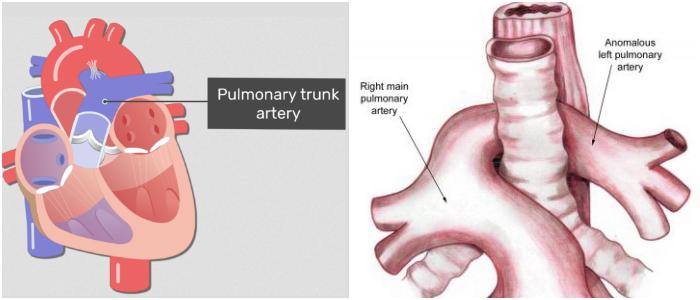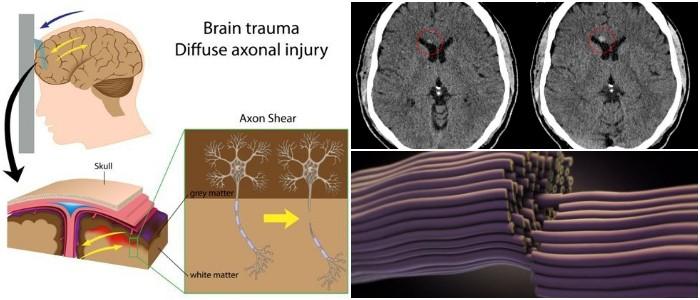An artery usually carries oxygenated blood from the heart to the body. However, the pulmonary artery is the exception as this one moves deoxygenated blood.
With every beat, the heart pumps blood through elastic and muscular tubes called “blood vessels.”
The artery is a type of blood vessel that carries blood filled with oxygen and nutrients to organs and tissues.
The red blood cells known as hemoglobin are the responsible for taking and transporting such oxygen through the body.
But a couple of these arteries are the exception to this trend. Some of them belong to a closed circuit of blood vessels between the heart and the lungs known as “Pulmonary Circulation.”
These vessels are the pulmonary arteries. They originate from the Truncus Arteriosus, the largest of them being the Main Pulmonary Artery (also known as Pulmonary Trunk).
The Pulmonary Trunk divides itself into numerous ramifications to reach the lungs.
Anatomy of the Pulmonary Trunk
The Main Pulmonary Artery or Pulmonary Trunk begins at the base of the right ventricle of the heart. It’s approximately 5 cm in length and 3 cm in diameter.
But when the Pulmonary Trunk reaches the level of the fifth thoracic vertebra, it divides into the Left Pulmonary Artery (LPA), and the Right Pulmonary Artery (RPA).
These two vessels are the terminal branches of the Main Pulmonary Artery. They differ in length, with the RPA being the longest, and the LPA being the shortest.
Left Pulmonary Artery
The LPA pierces the pericardium and enters the left lung. When it reaches its destination, it divides into two lobar arteries; each of these arteries branches into segmental arteries.
Segmental arteries will then branch into subsegmental pulmonary arteries. Both of them parallel segmental and subsegmental bronchi, in fact, they run alongside them.
Right Pulmonary Artery
The RPA passes transversely across the midline in the upper chest, through the mediastinum (the anatomic region located in the thorax), and travels below the aortic arch to enter the right lung.
When the RPA reaches the root of the right lung, it divides itself into two branches called the truncus anterior and the interlobar artery.
The Truncus Anterior arises super-laterally and then divides into two other branches. In some individuals, these arteries carry the entire blood supply to the right upper lobe.
The Function of the Pulmonary Arteries
The primary purpose of the Pulmonary Arteries is to carry deoxygenated blood from the right ventricle of the heart to the lungs.
The deoxygenated blood found in the right ventricle of the heart gets pumped by counteraction in the muscles lining the wall of this section of the heart.
The deoxygenated blood travels through the pulmonary artery to reach the lungs. Once there, the blood gets replenished with oxygen and then returned to the left ventricle of the heart.
From the left ventricle of the heart, the blood now carrying oxygen gets pumped to different parts of the body to restore their oxygen supply.
In the case of a developing fetus, the pulmonary arteries are not yet functioning. When the creature is developing in the mother’s womb, they may not require the lungs to oxygenize the blood until the time of birth.
That’s possible due to the growing fetus getting oxygen and nutrients from the mother through the umbilical cord. It is the only circumstance when there is no pulmonary artery function in the body.
When a patient suffers from pulmonary hypertension, their high blood pressure negatively impacts the heart. It may occur due to various factors, such as obstructions that hinder pulmonary artery functions.
Medical experts can detect pulmonary hypertension by measuring pulmonary artery pressure, also known as Pulmonary Capillary Wedge Pressure.
Recommendations
Since all of these vessels are an essential part of the cardiovascular system (more specifically the Pulmonary Circulation), people should take some measures to ensure the integrity of the cardiovascular health.
People who want to maintain their cardiovascular health should avoid smoking or chewing tobacco.
Another way to keep the cardiovascular and pulmonary systems healthy is getting regular exercise. Working out strengthens the heart and prevents several diseases or physical conditions.
A balanced diet helps to ensure cardiovascular health. People should try to avoid consuming fatty meals too often, for an excess of fat and cholesterol can obstruct arteries and hinder the blood flow.




